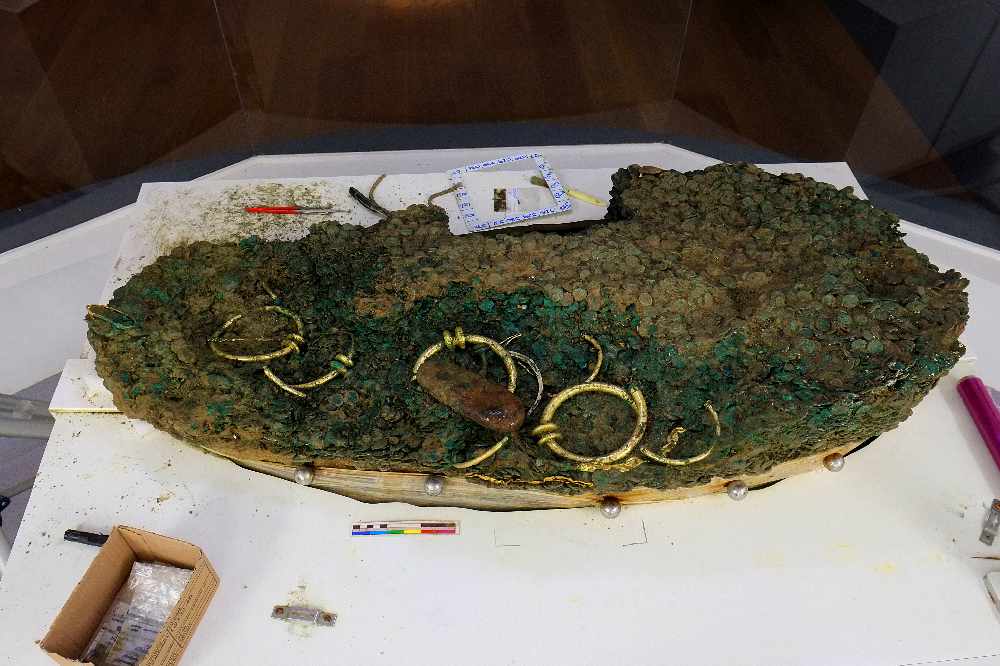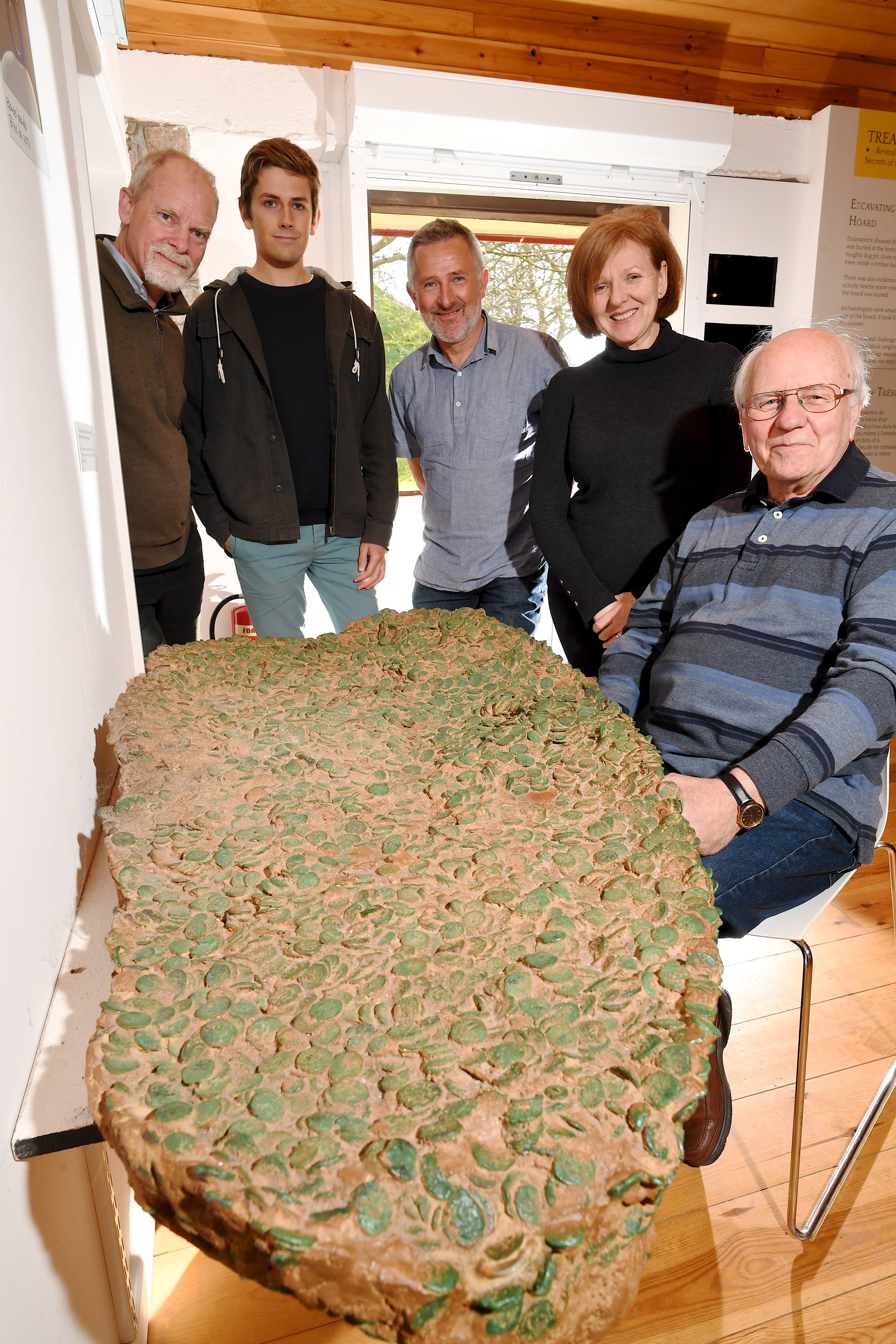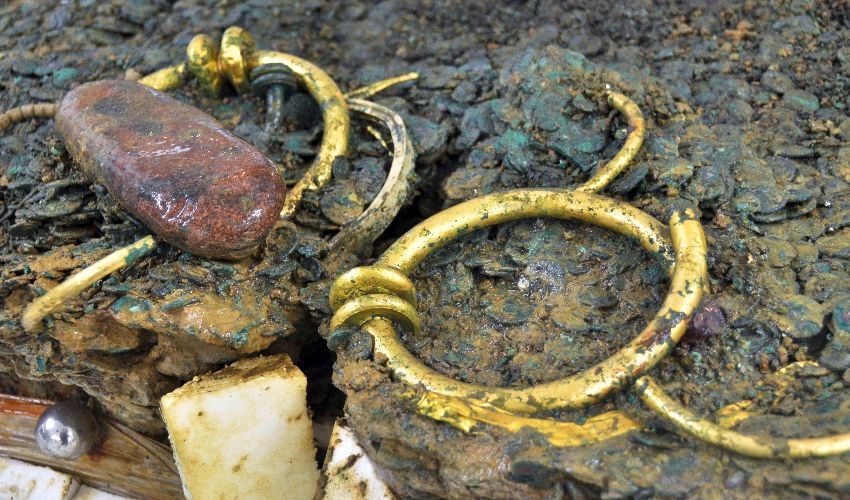Shortly after the 74,000 coins, as well as gold and silver jewellery, were unearthed by Island metal detectorists Reg Mead and Richard Miles in June 2012, press reports put their total value at around £10 million.

However, that figure has been downgraded by the UK Treasure Valuation Committee, a body attached to the Department for Culture, Media and Sport based in London, which offers expert advice to the government on items of declared treasure that museums might wish to acquire from the Crown.
The hoard has been declared ‘treasure’ as defined by the Treasure Act 1996, which means it belongs to the Queen, although under the law, the finders are entitled to a reward.
Mr Mead has said that the least valuable coins in the hoard, which dates from the first century BC, are likely to be worth £100 each, suggesting a valuation of at least £7.4 million, without taking into account the precious jewellery also found in it.

However, there has been discussion over whether the price would come down because so many coins had been found, reducing their rarity.
The valuation committee was originally asked to value the hoard in 2013 when it was still a large mass of corroded-together coins and other objects. They said that they would be happy to provide a new valuation once the hoard had been dismantled and it was possible to know exactly what it comprised of. That has now happened, but they say that their calculations will not be published until the matter of ownership has been settled.

Mr Mead and Mr Miles have said that they hoped the hoard would stay in Jersey and ministers have discussed finding the cash to purchase it for the Island.
Meanwhile, the two local finders have commissioned their own valuation having been informed that the value had been put at up to £2.5 million.

Mr Miles said that it was quite normal for finders to provide a figure to assist the committee.
He added that the committee had initially valued the hoard at between £500,000 and £4.5 million, but that the upper figure had later been reduced to £2.5 million.

Mr Miles explained: ‘Initially, it was reported in the press that the hoard was worth £10 million and the Treasure Valuation Committee has provided a figure of up to £2.5 million. I would hope that it would be between one of those two figures.’
He added that he was quite happy for the process to run its course and, although he hoped the matter would be resolved soon, he was happy to wait a little longer for his reward.
Mr Miles said that he hoped the hoard would be bought by the Island and put on display here, something which could boost tourism and local understanding of Island history for generations to come.

‘There are three choices,’ he suggested. ‘There are people who say that the hoard has got to stay in Jersey in its entirety, those who say that we’ve already got a few of those and so we do not need to keep all of it and those who think money would be better spent on nurses and teachers.
‘I hope that the Island will purchase it in its entirety.’